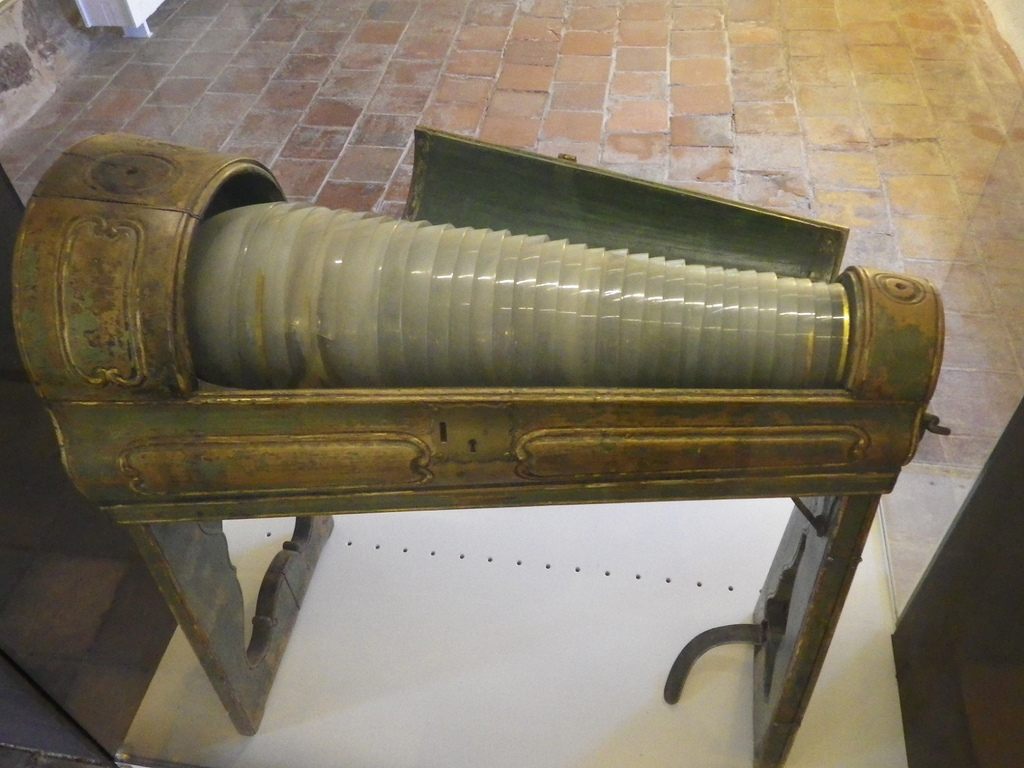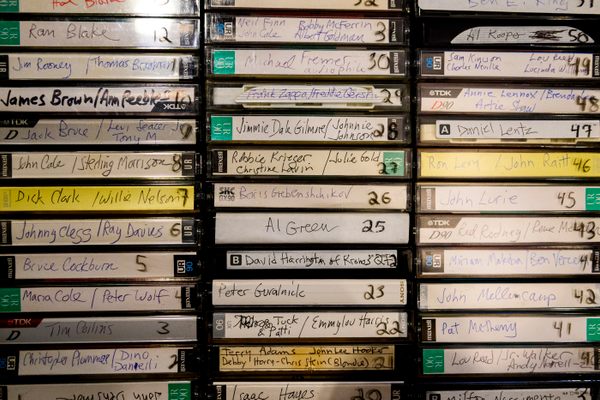Keeping the Ethereal Sounds of the Glass Armonica Alive
Ben Franklin’s invention is still singing otherworldly songs to the few who know how to play it.
There you are at a dinner party. You’ve had some wine and now you’ve got the misplaced confidence to try and make the half-empty glasses sing. Unless you’re some kind of tipsy prodigy, you’ll probably only get out a few awkward screeches. If you really wanted to become a master, you’d take up the glass armonica.
Invented by Ben Franklin and once rumored to drive people to madness (it didn’t), the glass armonica is a strange and delicate instrument that only a handful of people in the world can still play. But that hasn’t put a stop to its otherworldly sound.
Running a finger around the rims of a series of goblets to produce different tones (sometimes known as the glass harp) is a practice that goes back centuries. Franklin’s armonica, sometimes called a bowl organ, took the concept of using wet finger friction to sound circular rims and streamlined it. Back in 1761, he stacked an array of interlocked, graduated glass bowls on a rod and laid it horizontally, so that, when spun, the glass rims could be played like piano keys or violin strings. A performer need only press wetted fingers on the spinning rims to create music. Or at least, that’s the simple explanation.

“To play the glass armonica, you have to make them speak immediately and with all ten fingers. It’s not trivial,” says William Zeitler, one of the few remaining concert glass armonica artists and author of the book The Glass Armonica: The Music and the Madness. “With the piano, any three-year-old could push down a key and get a sound. But there’s a lot going on [with] angles and pressures to make those glasses speak right away, that represents a lot of practice.”
Before he could even begin to practice the glass armonica, Zeitler had to get his hands on one, which was no easy task. He’s been playing music since he was five, but didn’t pick up the glass armonica until he was 35. This was due in part to the fact that they are large, extremely fragile, and hard to come by. Eventually he was able to have a set of bowls made by the Finkenbeiner glass-blowing company out of Waltham, Massachusetts, one of the only manufacturers of glass armonicas still in existence. “Then I had to figure out how to play it, because there aren’t that many glass armonica teachers listed in the Yellow Pages,” he says.
Zeitler was ultimately able to teach himself how to play, and has now performed with the instrument on soundtracks, with full orchestras, and in smaller ensembles. And he’s picked up more than a few tricks to getting the most out of the instrument along the way.
To watch someone play the glass armonica, it looks as though it’s operated like a sort-of keyboard, but Zeitler compares it more to playing a violin. “If you think of a violinist, they play with the entire length of their bow, and use different parts of the bow for different purposes,” he says. “So when you’re playing the glass armonica, it’s as though your fingers are ten little bows.” In the beginning, Zeitler says that he tried to play the instrument with the tips of his fingers before realizing that they were the hardest parts of his fingers to sound the bowls with. Eventually he moved to using longer lengths of his fingers that provided him with more control over the sound.
Perhaps the most important aspect of the glass armonica that a performer has to look out for is what type of water they use. Just like when someone is sounding a glass as a party trick and has to dip their finger in the wine first, the hands of a glass harmonica player need to be lubricated at all times. “At first I started out with distilled water, not knowing any better, and discovered that that’s the most difficult water with which to play,” he says. “Tap water is also all over the road. I like getting mountain spring-type of water, that has some mineral content to it.” His preferred brand? Arrowhead.
The glass armonica produces an eerie, otherworldly sound unlike nearly any other instrument, and in its day, it had a somewhat popular following. Mozart wrote a couple of pieces just for the instrument, and the glass armonica has also featured in works by Beethoven and Saint-Saëns. But as the 18th century faded into the 19th, the glass armonica fell into relative obscurity for a variety of reasons.
In addition to a (false) rumor that the instrument could give you lead poisoning, one of the most oft-cited myths surrounding the glass armonica was that it was capable of driving players insane. This bizarre theory, which was largely popularized by the German music critic Johann Rochlitz in a 1798 edition of the music periodical Allgemeine Musikalische Zeitung, purported that the vibrations of the instrument excited the nerves, leading to madness. Zeitler doesn’t buy it. “I think it makes for good theater, but I wonder if anybody now or if anybody back then took it seriously.”
Instead, he thinks the glass armonica fell out of favor for far more mundane reasons. “It was because the music scene was changing dramatically, going from the Mozart era with relatively small aristocratic halls, to music moving into large public music halls,” he says. As a result, orchestral instruments such as pianos were re-engineered to produce louder sounds to carry through the larger spaces, but the glass armonica couldn’t be easily amplified. The instrument just became more trouble than it was worth.
The glass armonica is hanging on today thanks to a small group of musicians including Zeitler, Thomas Bloch, and Dean Shostak, who can still play the instrument professionally (which Zeitler defines as at least being able to perform Mozart’s two pieces for the instrument). Not many of the instruments themselves seem to be out there anymore either. Franklin’s original armonica is still held by the Franklin Institute, but can no longer be played, and Zeitler is still using the same glass armonica he assembled years ago. New glass armonicas start at about $8,000 from Finkenbeiner, which isn’t exactly an inviting price for new players.
Still, Zeitler isn’t worried about the survival of the glass armonica. “I imagine there will always be one or two crazy folks that just have to do it,” he says. The question is whether they were crazy before, or after, they picked up Franklin’s glass bowls.













Follow us on Twitter to get the latest on the world's hidden wonders.
Like us on Facebook to get the latest on the world's hidden wonders.
Follow us on Twitter Like us on Facebook